Make your own cayenne pepper powder at home from fresh garden-grown or store-bought cayenne peppers with a dehydrator. It is super easy to make and you won't get any fresher. Here is the recipe.
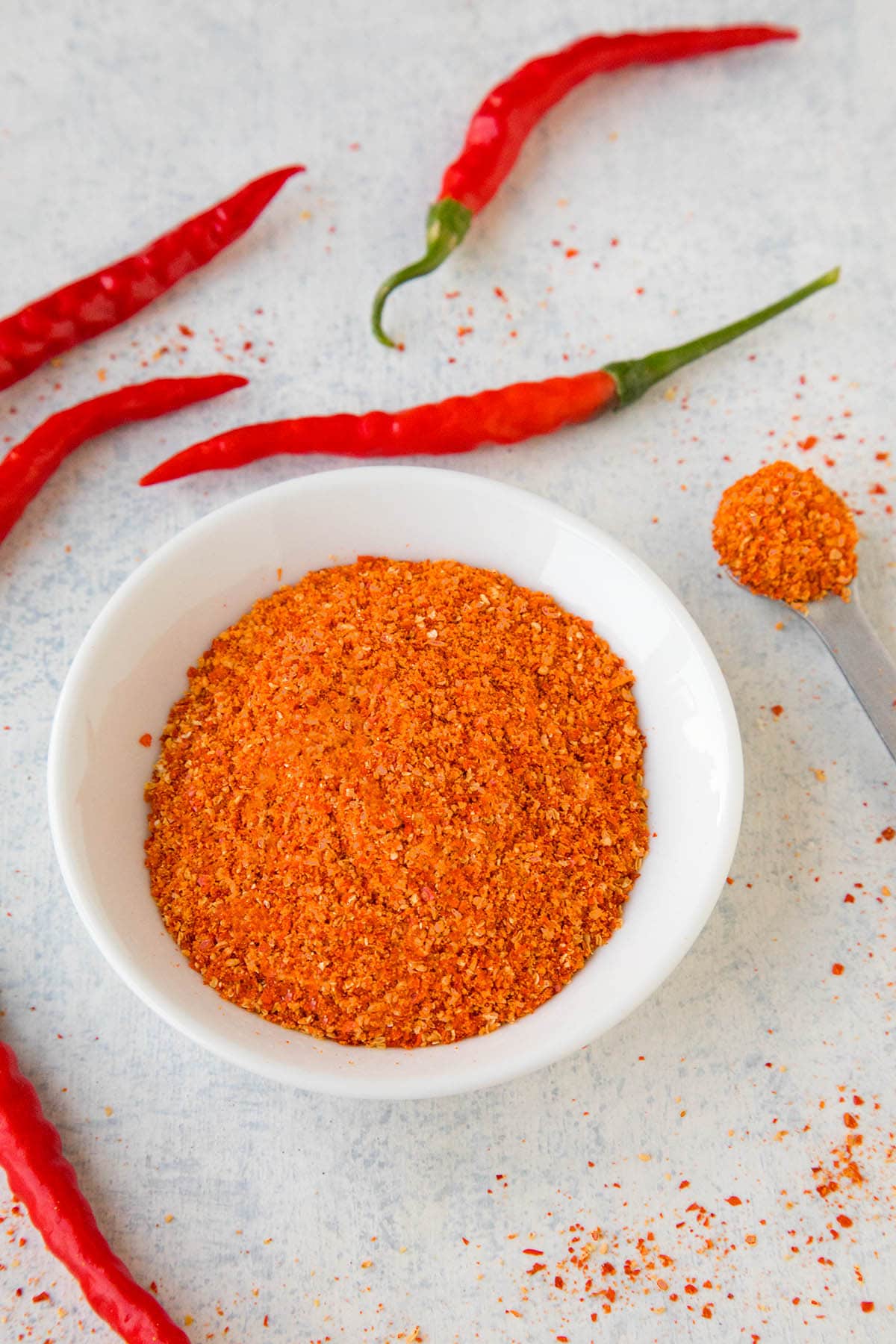
Dehydrating time again, my friends. It's just that time of year. When the garden is going WILD (in such a good way), it's time to make powders for using all year long.
Oh yeah!
I grew a variety of cayenne pepper this year with the specific intention of making Homemade Cayenne Pepper Sauce as well as cayenne powder, and here we are, making it!
Cayenne peppers a GREAT because they have a good heat level, but not insanely crazy hot, as well as having great flavor, and the color is so vibrant red. They make for outstanding powders and powder blends.
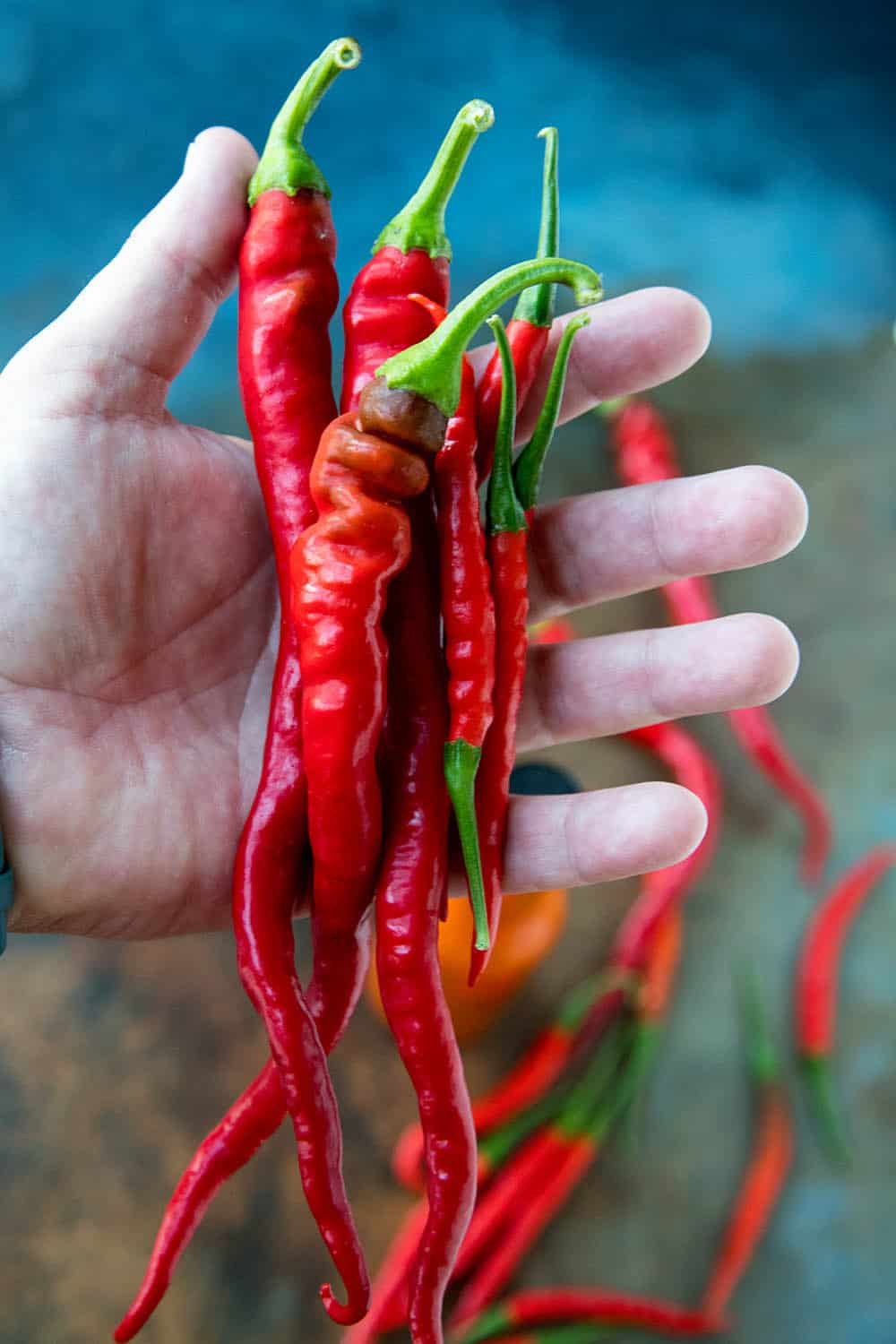
Cayenne powder is always good to have on hand for quick seasoning, but also for making your own blends, like my favorite Cajun Seasonings. See these links for further reference:
Cayenne Pepper Powder at Home
I used to purchase cayenne powders online, and sometimes I still do because there is HIGH DEMAND for it in my kitchen. However, growing them lets me save some money, which is always a plus.
But! The biggest reason is the freshness. You just won't get fresher, more vibrant powder.
All you really need to make your own homemade cayenne powder is a dehydrator and some cayenne peppers, of course.
Let's talk about how we make it, shall we?
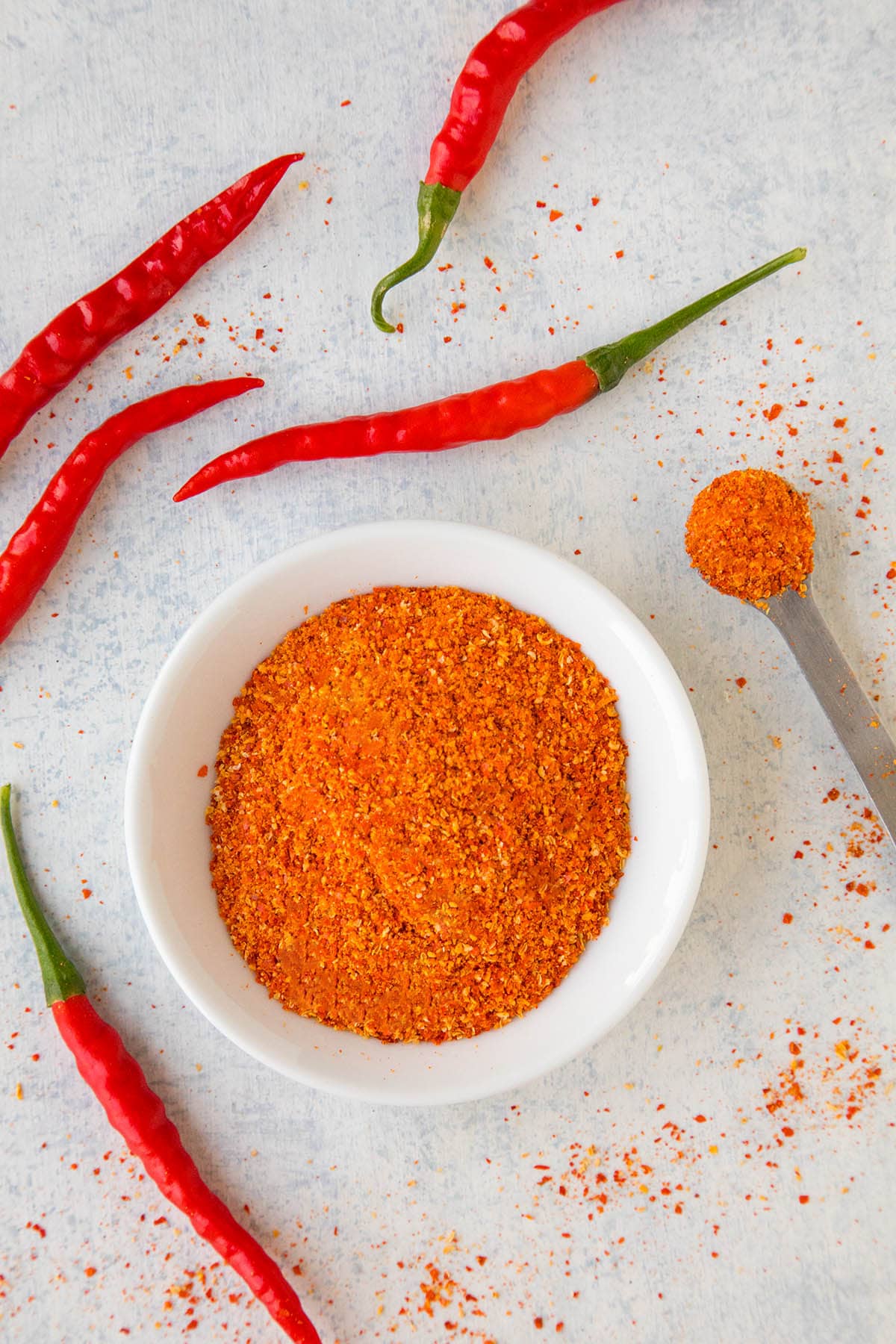
Making Homemade Cayenne Powder - the Recipe Method
First, gather up your cayenne peppers, then wash and dry them. Select only the freshest peppers and none that show any signs of rot.
Remove the stems and slice them open lengthwise. I recommend wearing gloves when handling spicy peppers. The oils can get onto your skin and cause a burning sensation.
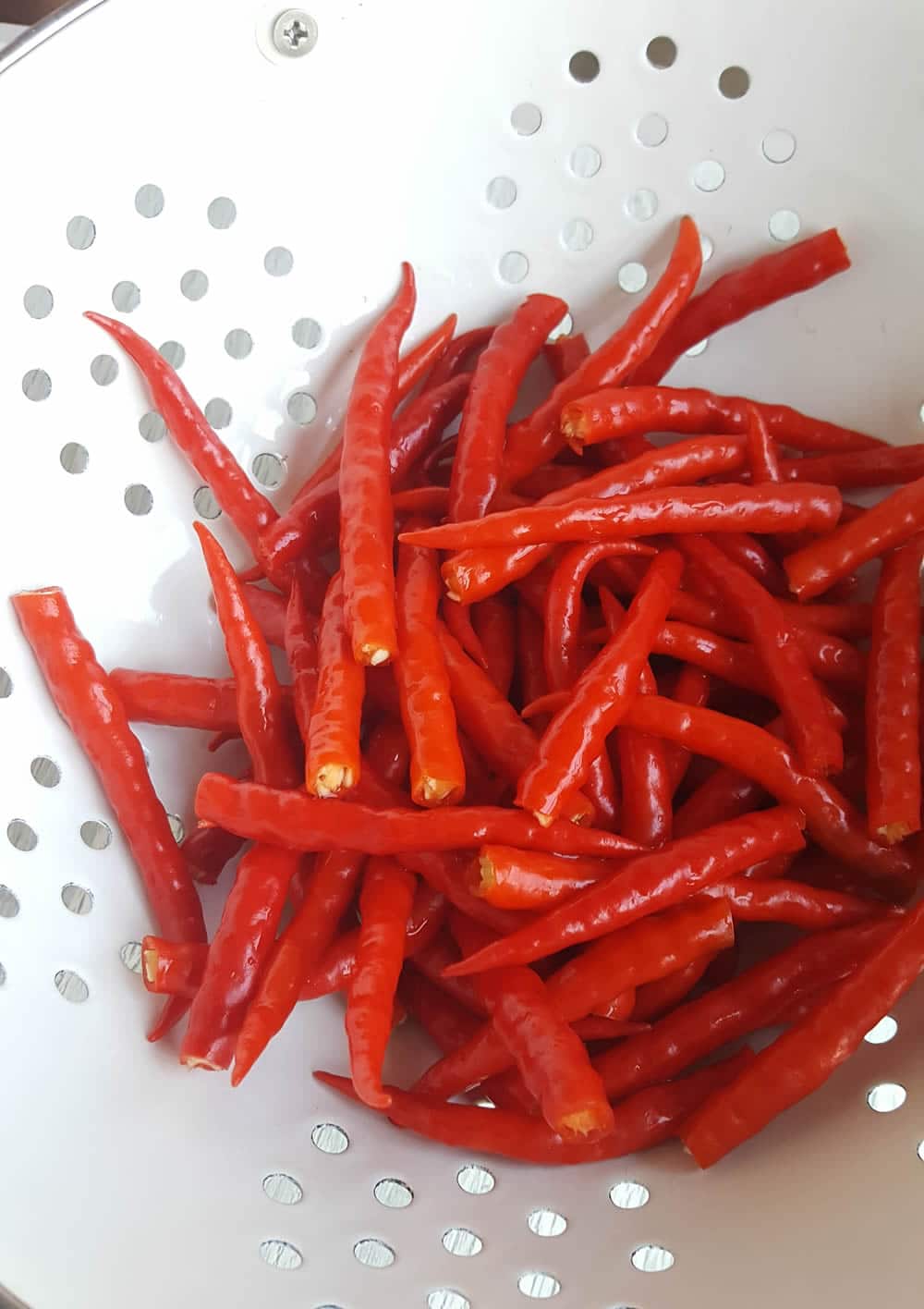
If this happens, see - How to Stop the Chili Pepper Burn on Your Skin.
Next, set the cayenne peppers onto dehydrator trays.
You can de-seed them if you'd like. I usually do not, as most of the seeds wind up falling out anyway after they are dried. Some people find the seeds bitter, which can be amplified when grinding, so scoop them out if you'd like, either before or after drying. See the notes below on this.
Dehydrate the cayenne peppers at 135 degrees F for at least 5 hours, or until they are completely dried through. It could take up to 8 hours or longer. Just follow the recommendations of your dehydrator.
You can speed up the drying process by chopping them into smaller pieces before dehydrating.
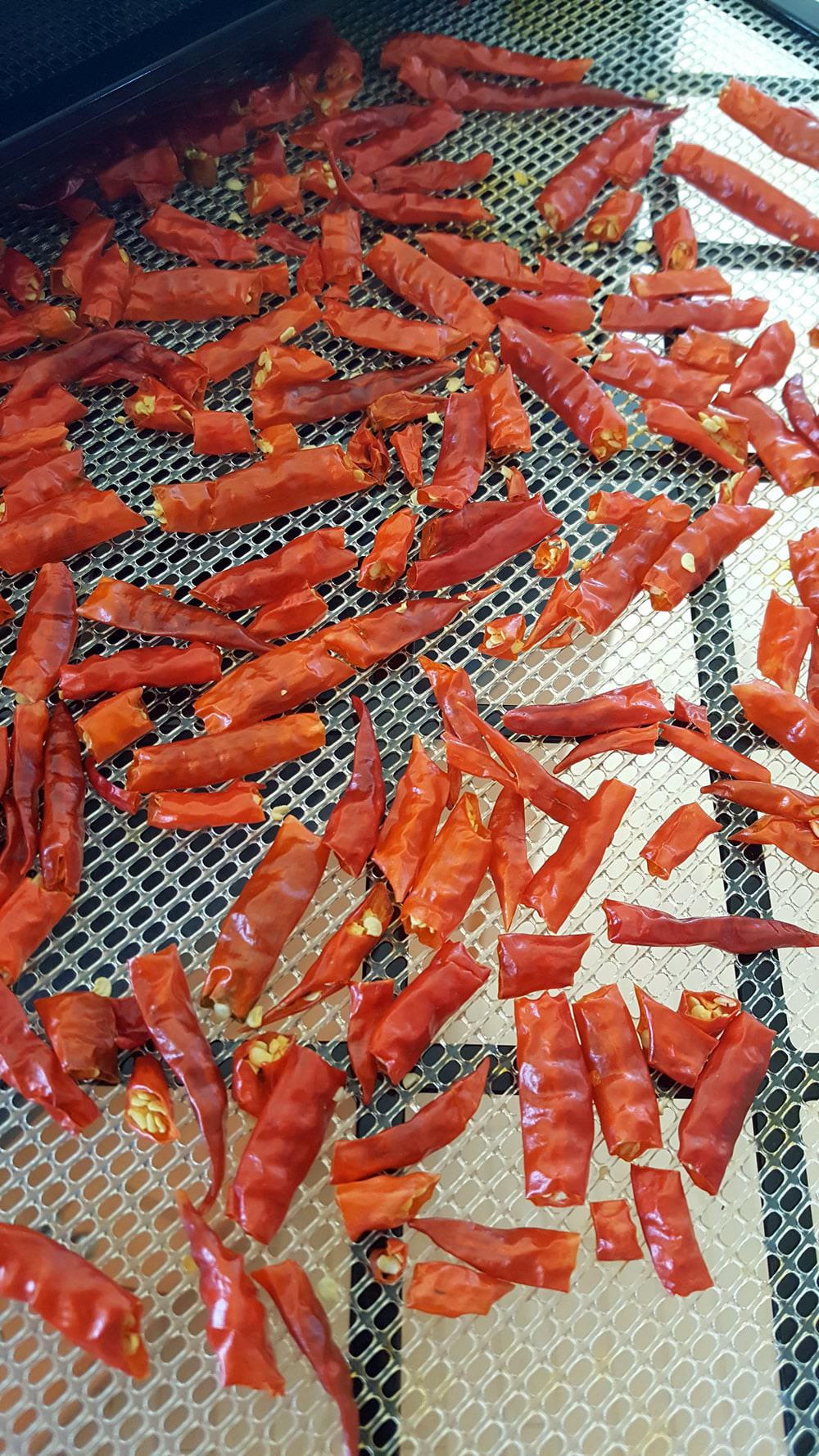
When dried, they should be crisp and crack when handling, and should not give any bend.
Once the cayenne peppers are completely dried, remove the seeds if you haven't done so already (if desired), then grind them down in a mortar with a pestle, or add them to a spice grinder and grind them to either a powder or a coarse grain. I use this: Magic Bullet MBR-1701 17-Piece Express Mixing Set (affiliate link).
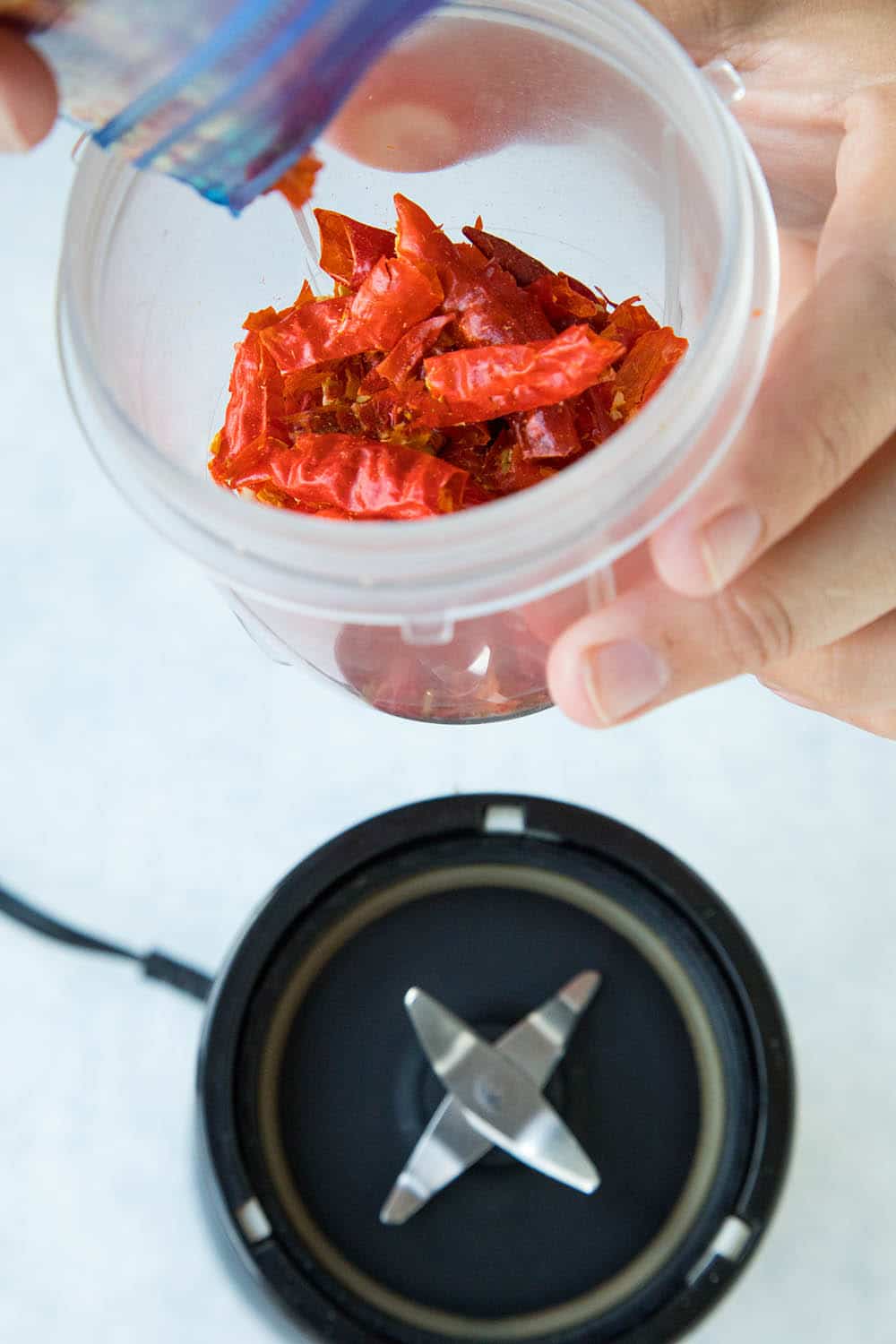
Give them a good grind for a minute or so.
The cayenne peppers will break down into a find powder.
Sift that powder out and process any remaining chunks until only powder remains.
You may have a tiny bit left to discard, but most of it will easily turn into powder.
Store your freshly made cayenne pepper powder in airtight spice containers. Use it as you would use any spice.
A Note About Seeds
Some people find the seeds rather bitter in chili peppers. When you crush them, you may release that bitterness into the final powder.
I have made powder both ways, both with and without the seeds and enjoy them both. However, if you note a bitterness in the seeds, remove them before grinding. It is extra work but can be worth it for your resulting powder.
Some people do not enjoy the bitterness.
My Dehydrating Story
I became obsessed with dehydrating when I started gardening. My garden was exploding with chili peppers and tomatoes, and I wanted some good ways to preserve them. As you can see from my Preserving Chili Peppers pages, I found MANY ways to preserve them, but dehydrating is definitely one of my favorites.
I've used my dehydrator to make all sorts of interesting seasoning blends from peppers and other ingredients I grew in my own garden, but one of the most interesting things I've begun to do is to make spicy homemade seasoning blends from discarded items.
I recently posted an article on How to Make Seasonings from Hot Sauce Pulp, and got a good reaction from it. Basically, if you strain the solids out of a homemade hot sauce recipe of yours to thin out the hot sauce, you might normally throw that pulp away. However, that pulp still have a lot of life and flavor left to it. Dehydrate it and turn it into a wonderful seasoning blend.
Recipe Tips & Notes
I like to place my dehydrator in the garage because it will release fumes over time and you will notice the odor. Let the dehydrator sit anywhere from 5 hours to overnight.
It will very likely take longer than 5 hours, but much depends on the thickness of the pepper walls and how many peppers you're working with.
I personally turn mine on when I go to bed and check it in the morning. The peppers are usually dried by morning, but if not, just leave them in longer until they are dried.
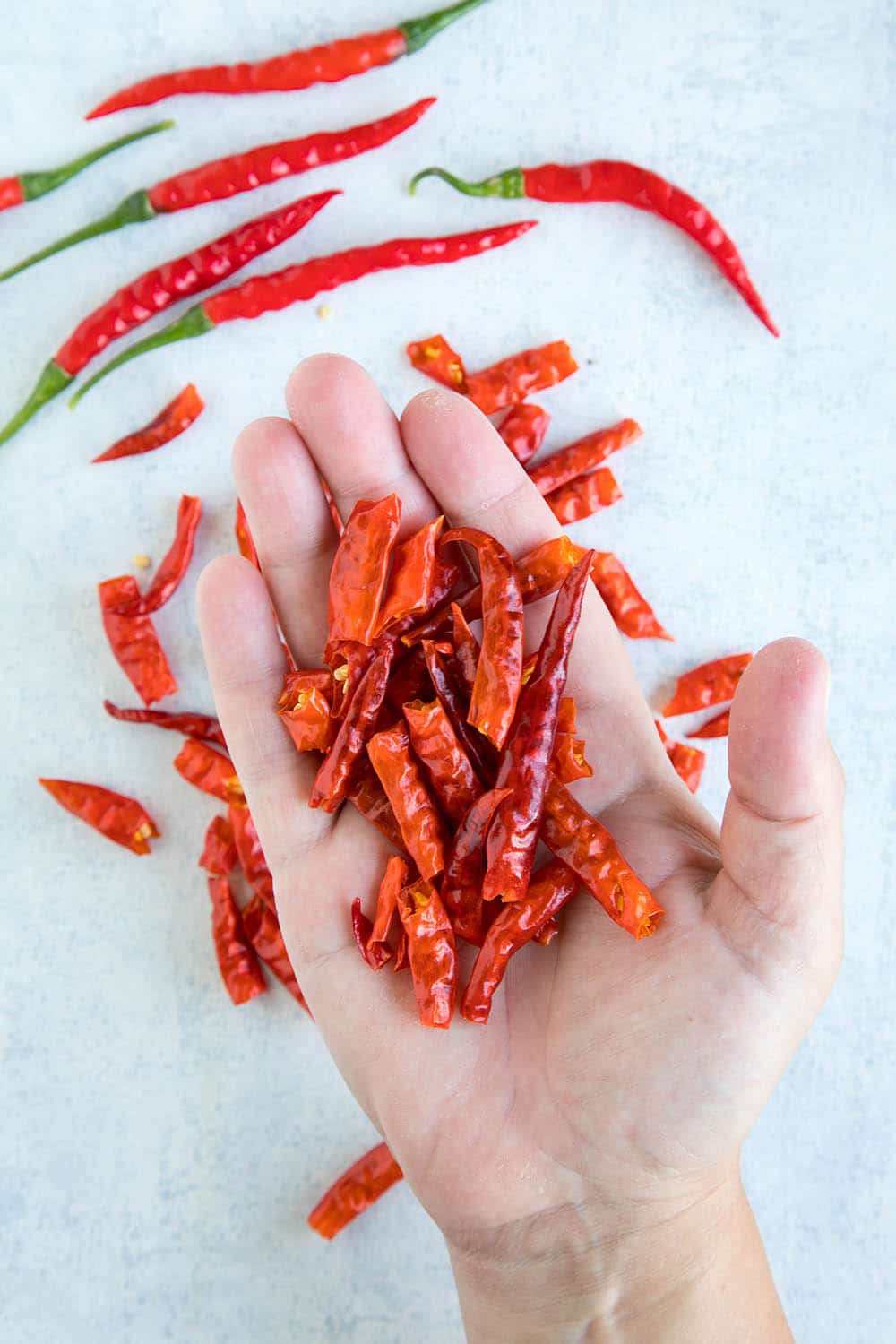
Safety Advice
When working with hotter peppers, it is important to wear gloves when handling the peppers both in raw and dried forms. The oils can get on your skin and cause burning sensations.
Need help? How to Stop the Chili Pepper Burn On Your Skin.
Also, the powders are quite fine and may get into the air if you are not working in a well ventilated room, so you may want to wear a mask and goggles.
Yield
1 pound (16 ounces) of fresh chili peppers typically will yield about 4 ounces of dried chili pepper pods, a 4 to 1 ratio. For this recipe, I used a variety of cayenne peppers weighing a total of 4 ounces/1.15 grams.
After drying and grinding, my yield was .75 ounces, or 3 tablespoons, of finished cayenne pepper powder, a but under the 4 to 1 ratio of fresh to dried, likely because of the thin walls.
Your results may vary.
How to Store Dried Chili Peppers
Once they are dried, remove and store them in baggies or containers, or use as you wish. Keep them in a dark place, like your pantry, for freshness.
These are the products that I use to dehydrate chili peppers and make blends, and I personally recommend them. They are affiliate links - just an FYI. If you use them, let me know if you have any questions and I can help. Email me anytime.
Mike's Recommended Products
- Nesco Snackmaster Pro Food Dehydrator FD-75A (affiliate link, my friends)- For Dehydrating peppers and other foods.
- Magic Bullet MBR-1701 17-Piece Express Mixing Set (affiliate link, my friends) - For Grinding down the peppers for powders.
- The Spicy Dehydrator Cookbook - My cookbook. Check it out!
Other Resources
- How to Dehydrate Chili Peppers and Make Chili Powders and Blends - A longer video by me, or watch the shorter one below
- Preserving Chili Peppers
- Cayenne Pepper Benefits
Go Get a Dehydrator!
If you do not yet own a dehydrator, I urge you to order one up. I LOVE my dehydrators (yes, I own two) and use them all the time. They're essential for making leathers, jerky, spice blends, preserving in general and more. Here are links to the two that I personally own (Affiliate Links, my friends! FYI):
The Nesco is a smaller dehydrator that is perfect for general home use: Nesco FD-75A Snackmaster Pro Food Dehydrator, White
The Excalibur is a larger 9-tray dehydrator that is ideal for larger batches: Excalibur 3926TB Food Dehydrator, Black
I use and highly recommend both of these.
Cayenne Pepper Substitute
A question I receive often is, what is a good substitute for cayenne pepper? If you happen to run out, there are many different powders, blends and even hot sauces that you can use. See my post on cayenne pepper substitutes to help you.
Try Some of My Other Popular Homemade Spice Blends
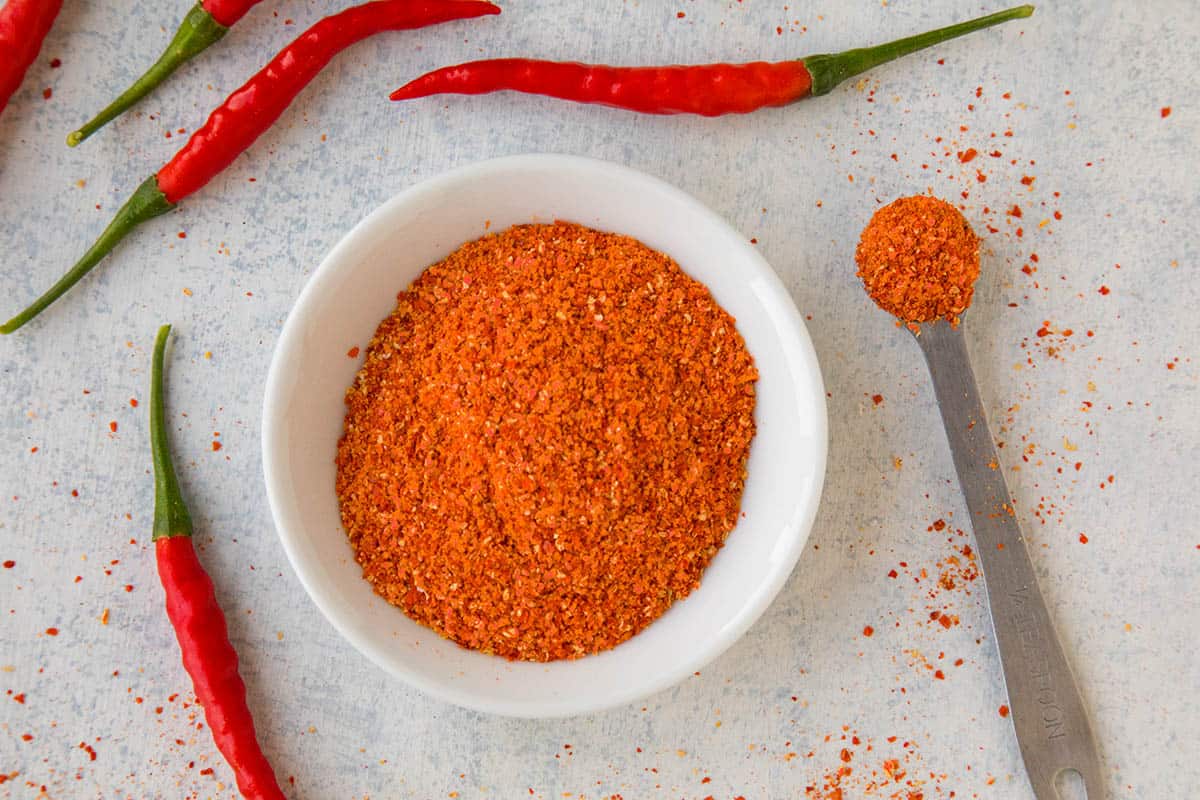
If you enjoy this recipe, I hope you'll leave a comment with some STARS. Also, please share it on social media. Don't forget to tag us at #ChiliPepperMadness. I'll be sure to share! Thanks! -- Mike H.
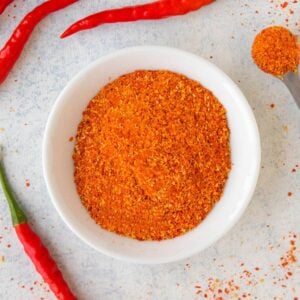
Homemade Cayenne Pepper Recipe
Ingredients
- 4 ounces cayenne peppers
Instructions
- Clean and dry the cayenne peppers. Wearing gloves, remove the stems and slice in half lengthwise. Remove the seeds if you wish.
- Set the sliced cayenne peppers onto dehydrator sheets and dehydrate at 135 degrees F (or at your dehydrator's recommended temperature) for 8 hours, or until they are completely dried through.
- Crush the dried cayenne peppers in a mortar and pestle, or add them to a spice grinder and grind them to a powder.
- Sift the powder and process the remaining chunks until only a fine powder remains.
- Store in airtight containers.
Video
Notes
Nutrition Information
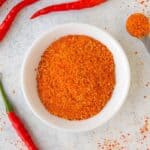


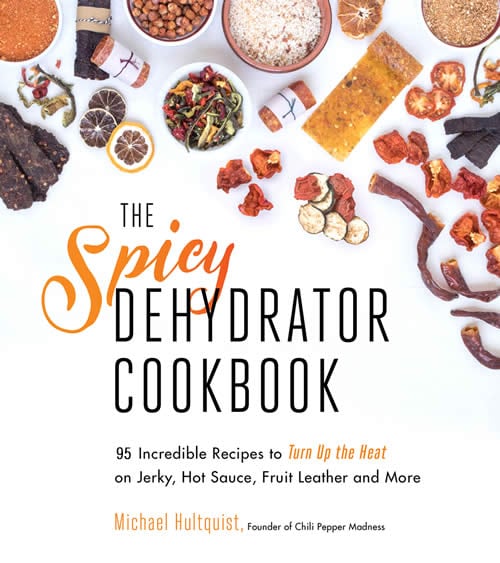
John Robinson says
I cook with cayenne pepper powder with almost everything that I cook.
Mike H. says
It's so good, huh?!
Lisa Sharpe says
Could I add the seeds I remove to the crushed pepper flakes that I am also making?
Mike Hultquist says
Lisa, yes, you can add in the seeds. Some people find them bitter, but they are often included in commercial chili flakes.
Matthew Dyer says
Being lazy, I ground up my peppers in the food processor. When I popped the top off I started sneezing like crazy, and then so did my Basset Hound who was hanging around in the kitchen. Look out! Great pepper powder though, it’s addictive.
Michael Hultquist - Chili Pepper Madness says
Haha, yep, that can happen! I've had a few sneezing fits myself. A mask can help, and open windows!
Damien C. says
This came out just right. It's even spicier than the stuff you buy in the stores. So much better.
Michael Hultquist - Chili Pepper Madness says
Excellent, Damien! I agree, much better when it is fresh.
Jeffrey Palmer - From Wisconsin says
Another way to de pepps is the micro wave...
Slice them and put the slices on low for a lot of time..
Jeff